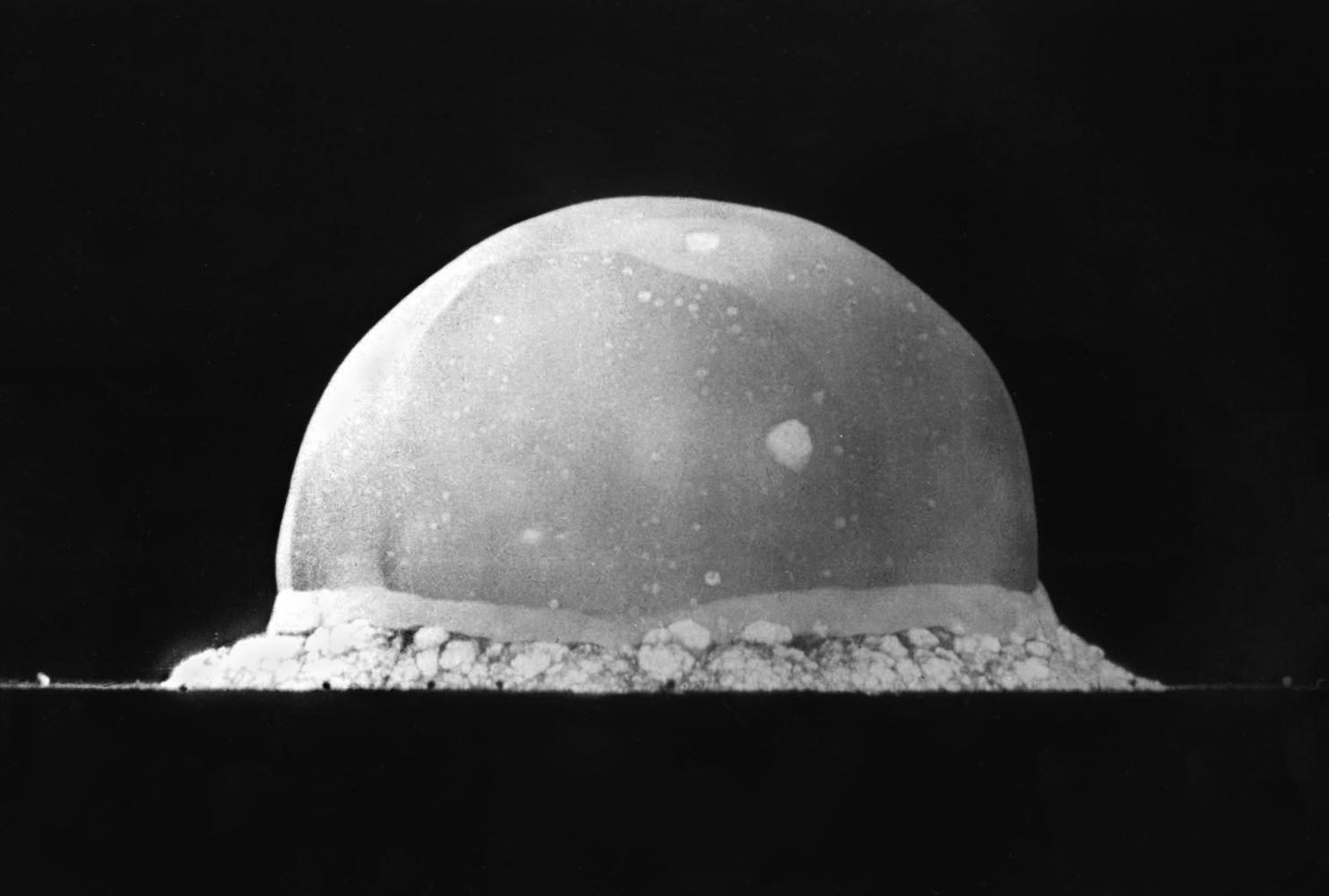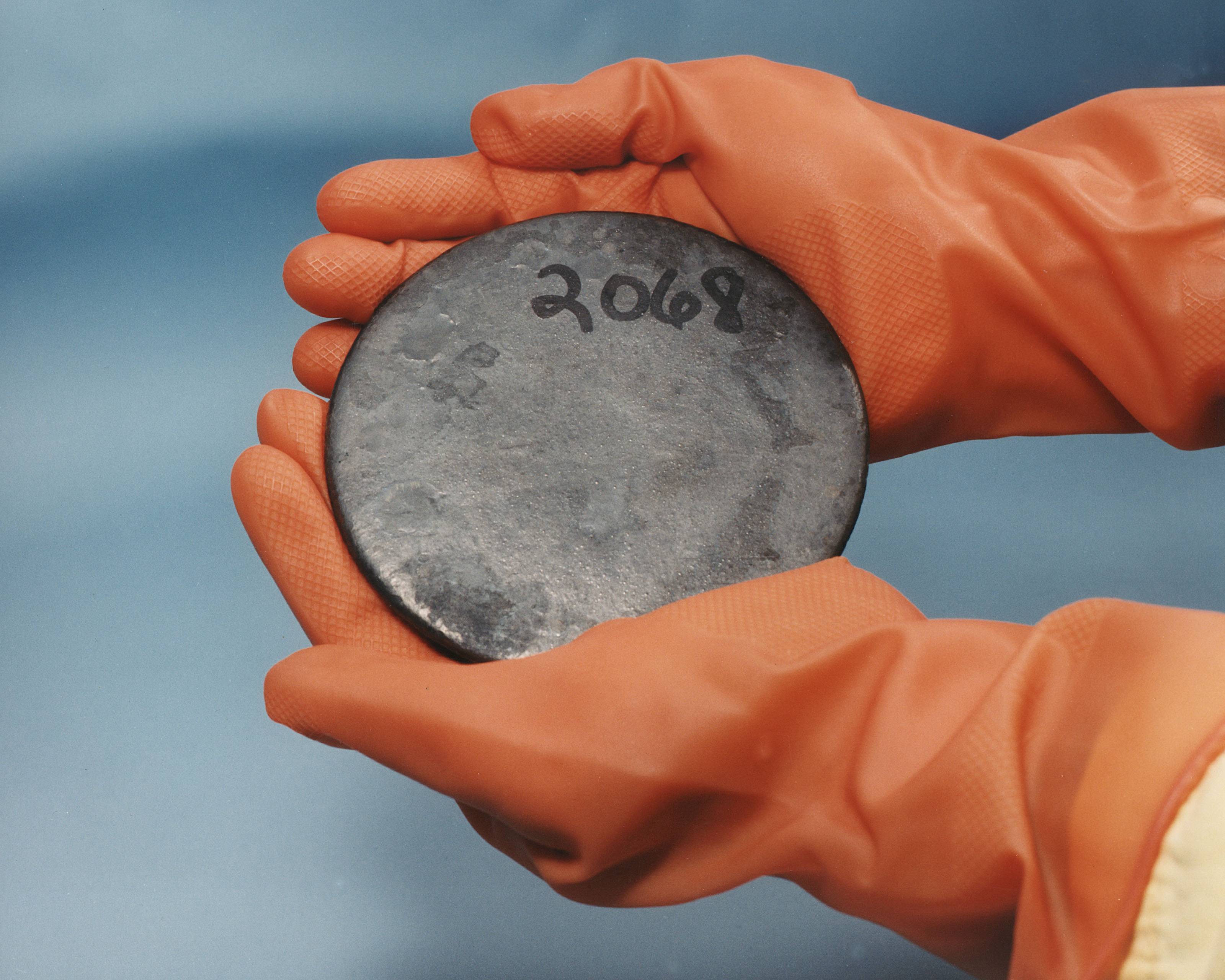|
James H. Coon
James Huntington Coon (November 9, 1914 – March 10, 1996) physicist at Los Alamos Scientific Laboratory, made significant contributions to the science and study of neutron interactions. He worked on the Vera satellite project. Life and Times James Huntington Coon was born on November 9, 1914, and died on March 10, 1996. He was interred at the Guaje Pines Cemetery, burial plot of Section 5, Lot 146C in Los Alamos, New Mexico. Education Coon attended Indiana University at Bloomington, Indiana, and graduated in 1937 with a Bachelor of Arts in chemistry. Outside of studies, he had membership in the Chemistry Dolphin Club, Der Deutsche Verein (The German Club) and the Varsity Swimming team. In 1942, Coon received a Ph.D. in physics from the University of Chicago. Los Alamos In 1944, scientists at Los Alamos Scientific Laboratory designed field experiments to measure the air blast and ground shock effects from the Trinity device. In March 1945, an exploration geophysicist Herbert M ... [...More Info...] [...Related Items...] OR: [Wikipedia] [Google] [Baidu] |
Los Alamos National Laboratory
Los Alamos National Laboratory (often shortened as Los Alamos and LANL) is one of the sixteen research and development Laboratory, laboratories of the United States Department of Energy National Laboratories, United States Department of Energy (DOE), located a short distance northwest of Santa Fe, New Mexico, in the Southwestern United States, American southwest. Best known for its central role in helping develop the First Atomic bomb, first atomic bomb, LANL is one of the world's largest and most advanced scientific institutions. Los Alamos was established in 1943 as Project Y, a top-secret site for designing nuclear weapons under the Manhattan Project during World War II.The site was variously called Los Alamos Laboratory and Los Alamos Scientific Laboratory. Chosen for its remote yet relatively accessible location, it served as the main hub for conducting and coordinating nuclear research, bringing together some of the world's most famous scientists, among them numerous Nobel ... [...More Info...] [...Related Items...] OR: [Wikipedia] [Google] [Baidu] |
Atomic Pile
A nuclear reactor is a device used to initiate and control a fission nuclear chain reaction. They are used for commercial electricity, marine propulsion, weapons production and research. Fissile nuclei (primarily uranium-235 or plutonium-239) absorb single neutrons and split, releasing energy and multiple neutrons, which can induce further fission. Reactors stabilize this, regulating neutron absorbers and moderators in the core. Fuel efficiency is exceptionally high; low-enriched uranium is 120,000 times more energy dense than coal. Heat from nuclear fission is passed to a working fluid coolant. In commercial reactors, this drives turbines and electrical generator shafts. Some reactors are used for district heating, and isotope production for medical and industrial use. Following the 1938 discovery of fission, many countries initiated military nuclear research programs. Early subcritical experiments probed neutronics. In 1942, the first artificial critical nuclear r ... [...More Info...] [...Related Items...] OR: [Wikipedia] [Google] [Baidu] |
Gamma Radiation
A gamma ray, also known as gamma radiation (symbol ), is a penetrating form of electromagnetic radiation arising from high energy interactions like the radioactive decay of atomic nuclei or astronomical events like solar flares. It consists of the shortest wavelength electromagnetic waves, typically shorter than those of X-rays. With frequencies above 30 exahertz () and wavelengths less than 10 picometers (), gamma ray photons have the highest photon energy of any form of electromagnetic radiation. Paul Villard, a French chemist and physicist, discovered gamma radiation in 1900 while studying radiation emitted by radium. In 1903, Ernest Rutherford named this radiation ''gamma rays'' based on their relatively strong penetration of matter; in 1900, he had already named two less penetrating types of decay radiation (discovered by Henri Becquerel) alpha rays and beta rays in ascending order of penetrating power. Gamma rays from radioactive decay are in the energy range ... [...More Info...] [...Related Items...] OR: [Wikipedia] [Google] [Baidu] |
Lithium
Lithium (from , , ) is a chemical element; it has chemical symbol, symbol Li and atomic number 3. It is a soft, silvery-white alkali metal. Under standard temperature and pressure, standard conditions, it is the least dense metal and the least dense solid element. Like all alkali metals, lithium is highly reactivity (chemistry), reactive and flammable, and must be stored in vacuum, inert atmosphere, or inert liquid such as purified kerosene or mineral oil. It exhibits a metallic luster (mineralogy), luster. It corrosion, corrodes quickly in air to a dull silvery gray, then black tarnish. It does not occur freely in nature, but occurs mainly as pegmatite, pegmatitic minerals, which were once the main source of lithium. Due to its solubility as an ion, it is present in ocean water and is commonly obtained from brines. Lithium metal is isolated electrolysis, electrolytically from a mixture of lithium chloride and potassium chloride. The Atomic nucleus, nucleus of the lithiu ... [...More Info...] [...Related Items...] OR: [Wikipedia] [Google] [Baidu] |
Neutron Cross Section
In nuclear physics, the concept of a neutron cross section is used to express the likelihood of interaction between an incident neutron and a target nucleus. The neutron cross section σ can be defined as the area in cm2 for which the number of neutron-nuclei reactions taking place is equal to the product of the number of incident neutrons that would pass through the area and the number of target nuclei. In conjunction with the neutron flux, it enables the calculation of the reaction rate, for example to derive the thermal power of a nuclear power plant. The standard unit for measuring the cross section is the barn, which is equal to 10−28 m2 or 10−24 cm2. The larger the neutron cross section, the more likely a neutron will react with the nucleus. An isotope (or nuclide) can be classified according to its neutron cross section and how it reacts to an incident neutron. Nuclides that tend to absorb a neutron and either decay or keep the neutron in its nucleus are neutron a ... [...More Info...] [...Related Items...] OR: [Wikipedia] [Google] [Baidu] |
Inelastic Scattering
In chemistry, nuclear physics, and particle physics, inelastic scattering is a process in which the internal states of a particle or a system of particles change after a collision. Often, this means the kinetic energy of the incident particle is not conserved (in contrast to elastic scattering). Additionally, relativistic collisions which involve a transition from one type of particle to another are referred to as inelastic even if the outgoing particles have the same kinetic energy as the incoming ones. Processes which are governed by elastic collisions at a microscopic level will appear to be inelastic if a macroscopic observer only has access to a subset of the degrees of freedom. In Compton scattering for instance, the two particles in the collision transfer energy causing a loss of energy in the measured particle. Electrons When an electron is the incident particle, the probability of inelastic scattering, depending on the energy of the incident electron, is usually smaller t ... [...More Info...] [...Related Items...] OR: [Wikipedia] [Google] [Baidu] |
Elastic Scattering
Elastic scattering is a form of particle scattering in scattering theory, nuclear physics and particle physics. In this process, the internal states of the Elementary particle, particles involved stay the same. In the non-relativistic case, where the relative velocities of the particles are much less than the speed of light, elastic scattering simply means that the total kinetic energy of the system is conserved. At relativistic velocities, elastic scattering also requires the final state to have the same number of particles as the initial state and for them to be of the same kind. Rutherford scattering When the incident particle, such as an alpha particle or electron, is diffraction, diffracted in the Coulomb potential of atoms and molecules, the elastic scattering process is called Rutherford scattering. In many electron diffraction techniques like reflection high energy electron diffraction (RHEED), transmission electron diffraction (TED), and gas electron diffraction (GED), wh ... [...More Info...] [...Related Items...] OR: [Wikipedia] [Google] [Baidu] |
Fissile Material
In nuclear engineering, fissile material is material that can undergo nuclear fission when struck by a neutron of low energy. A self-sustaining thermal chain reaction can only be achieved with fissile material. The predominant neutron energy in a system may be typified by either slow neutrons (i.e., a thermal system) or fast neutrons. Fissile material can be used to fuel thermal-neutron reactors, fast-neutron reactors and nuclear explosives. Fissile vs fissionable The term ''fissile'' is distinct from ''fissionable''. A nuclide that can undergo nuclear fission (even with a low probability) after capturing a neutron of high or low energy is referred to as ''fissionable''. A fissionable nuclide that can undergo fission with a high probability after capturing a low-energy thermal neutron is referred to as ''fissile''. Fissionable materials include those (such as uranium-238) for which fission can be induced only by high-energy neutrons. As a result, fissile materi ... [...More Info...] [...Related Items...] OR: [Wikipedia] [Google] [Baidu] |
Neutron Reflector
A neutron reflector is any material that reflects neutrons. This refers to elastic scattering rather than to a specular reflection. The material may be graphite, beryllium, steel, tungsten carbide, gold, or other materials. A neutron reflector can make an otherwise subcritical mass of fissile material critical, or increase the amount of nuclear fission that a critical or supercritical mass will undergo. Such an effect was exhibited twice in accidents involving the Demon Core, a subcritical plutonium pit that went critical in two separate fatal incidents when the pit's surface was momentarily surrounded by too much neutron reflective material. Nuclear reactors In a uranium graphite chain reacting pile, the critical size may be considerably reduced by surrounding the pile with a layer of graphite, since such an envelope reflects many neutrons back into the pile. To obtain a 30-year life span, the SSTAR nuclear reactor design calls for a moveable neutron reflector to be ... [...More Info...] [...Related Items...] OR: [Wikipedia] [Google] [Baidu] |
Thermonuclear Weapon
A thermonuclear weapon, fusion weapon or hydrogen bomb (H-bomb) is a second-generation nuclear weapon design. Its greater sophistication affords it vastly greater destructive power than first-generation nuclear bombs, a more compact size, a lower mass, or a combination of these benefits. Characteristics of nuclear fusion reactions make possible the use of non-fissile depleted uranium as the weapon's main fuel, thus allowing more efficient use of scarce fissile material. Its multi-stage design is distinct from the usage of fusion in simpler Boosted fission weapon, boosted fission weapons. The first full-scale thermonuclear test (Ivy Mike) was carried out by the United States in 1952, and the concept has since been employed by at least the five recognized List of states with nuclear weapons#Recognized nuclear-weapon states, nuclear-weapon states and United Nations Security Council, UNSC Permanent members of the United Nations Security Council, permanent members: the Nuclear weapons ... [...More Info...] [...Related Items...] OR: [Wikipedia] [Google] [Baidu] |
Neutrons
The neutron is a subatomic particle, symbol or , that has no electric charge, and a mass slightly greater than that of a proton. The neutron was discovered by James Chadwick in 1932, leading to the discovery of nuclear fission in 1938, the first self-sustaining nuclear reactor (Chicago Pile-1, 1942) and the first nuclear weapon (Trinity, 1945). Neutrons are found, together with a similar number of protons in the nuclei of atoms. Atoms of a chemical element that differ only in neutron number are called isotopes. Free neutrons are produced copiously in nuclear fission and fusion. They are a primary contributor to the nucleosynthesis of chemical elements within stars through fission, fusion, and neutron capture processes. Neutron stars, formed from massive collapsing stars, consist of neutrons at the density of atomic nuclei but a total mass more than the Sun. Neutron properties and interactions are described by nuclear physics. Neutrons are not elementary particles; each is ... [...More Info...] [...Related Items...] OR: [Wikipedia] [Google] [Baidu] |


